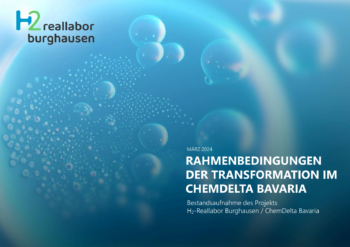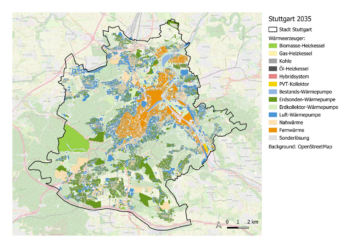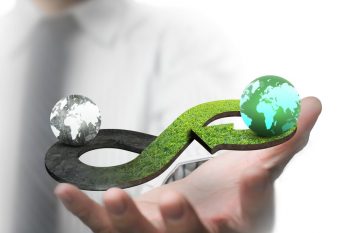Emission accounting: When is hydrogen considered “green”?
Hydrogen will contribute to decarbonization in the future. Important political decisions are currently being made to promote the hydrogen economy: the EU’s Delegated Act (DA) specifies how hydrogen emissions are to be accounted for, as well as the amount below which it is considered low-carbon, or “green”. The proposed methodology for hydrogen accounting in the DA differs from the established life cycle assessment (LCA) methodology. The choice of emission accounting methodology results in a different assessment of the climatic impact of hydrogen in the case of electrolysis. This is relevant in practice since the methodology chosen can be decisive for compliance with the threshold prescribed in the regulations, such as the EU taxonomy.
Article 25 of the RED II makes a reference to the DA on gaseous and liquid fuels of non-biogenic origin. It outlines a methodology for greenhouse gas emission accounting for hydrogen which is relevant when hydrogen is used as a fuel in the transportation sector. The draft of this DA was published in May 2022 and was adopted in February 2023 by the EU Commission. The EU taxonomy also refers to the DA. There, a fixed threshold for green hydrogen is specified. The exact methodology, however, is not determined. A choice is given between the methodology according to DA and the holistic LCA approach according to ISO 14040/44 or 14067 (concretization for Carbon Footprint). In the following, the differences in emissions accounting between the methodology proposed in the DA and a classical LCA are examined and the implications for practice are derived.
LCA accounting provides a higher carbon footprint of hydrogen than DA accounting
A major difference in the methodology lies in the system boundaries. In principle, greenhouse gas emissions are considered over the entire life cycle, starting with extraction of raw materials and energy for the process, through production, and ending with incineration. However, while machinery and equipment are excluded from the system boundary in the DA method, all phases of the life cycle, including the construction of the equipment, are considered in the LCA. This methodological difference is illustrated in Figure 1.

To show the impact of this methodological difference, we calculate the carbon footprint for hydrogen from electrolysis according to DA and LCA methodolgy. Different electricity sources are considered, since this is the most important factor influencing the climate impact of hydrogen from electrolysis [1].
Figure 2 shows the global warming potential (GWP 100a) expressed in kilograms of CO2 equivalents (CO2e) per kilogram of hydrogen produced. Since machinery and equipment is not accounted for in the DA, the climate impact calculated is lower compared to the LCA methodology. It is apparent that the so-called “yellow” hydrogen produced using the German electricity mix in 2018 significantly exceeds the threshold from the EU taxonomy. For the LCA, the emission factor of the electricity mix including upstream chains (538 g CO2e/kWh) from [2] is used, while for the DA a value from the draft of the Annex (446 g CO2e/kWh) is used [3].
The differences between the two accounting methods for hydrogen are evident, especially in the case of renewables. In the DA, electricity from renewable sources has no climate impact since the plants are not included in the calculations. Therefore, the carbon footprint of green hydrogen is almost zero. However, a full LCA also takes into account the resources and energy required for plant construction and end-of-life. In particular, the higher emission factor of photovoltaic (PV) systems leads to a significantly higher carbon footprint in a holistic life cycle assessment. In addition to the selected methodology, the choice of the data basis also plays a decisive role. For PV plants in Germany, current data from [4] show a clear advantage over generic data from the widely used LCA database ecoinvent 3.8 [5]. The specified threshold for green hydrogen is exceeded due to the data provided in the LCA database. Thus, even hydrogen produced solely from solar electricity may no longer be considered sustainable.

The threshold must fit the emission accounting methodology
In principle, the DA method for the emission accounting of hydrogen is a simplified method compared to the LCA, since plants are not accounted for. However, the choice of the accounting method in the EU taxonomy is to be regarded as critical. In practice, hydrogen balancing according to DA is preferable to LCA for producers, as it leads to a lower carbon footprint. However, since only one threshold is given, the same hydrogen can be balanced as green once and fail the sustainability criterion once, depending on the method. Our results show that this is relevant in practice: even if only solar electricity is used for electrolysis, the threshold is exceeded in a LCA with values from a common life cycle assessment database. If the same process is balanced according to the DA specifications, the global warming potential remains below the threshold. In regulatory terms, the DA method is therefore likely to prevail, however, accounting in accordance with the ISO standards is established in other business relationships. This can lead to companies accounting for the same product using different emission accounting methods, resulting in additional expense.
To conclude, policies that set carbon footprint thresholds to define sustainable and non-sustainable business activities are needed for the transformation to climate neutrality. However, it is important to note that the methodology of emission accounting must be implementable for practitioners. In addition, it should be ensured that an applied threshold fits the selected methodology of emission accounting, which is not given in the case of the EU taxonomy as several methodologies can be chosen.
This analysis was developed within the framework of the transfer research project Trans4ReaL (FKZ: 003EWT001A), which scientifically accompanies the living labs of the energy transition in the field of hydrogen. The evaluation serves as a first discussion basis for the emission accounting of “green” hydrogen.
More Information
- Trans4ReaL
- Beitragsreihe Wasserstoff: Welchen Beitrag kann Wasserstoff zur Energiewende liefern?
- Elektrolyse – Die Schlüsseltechnologie für Power-to-X
Literature
[1] FfE (2021). Ökobilanzen synthetischer Kraftstoffe – Methodikleitfaden
http://ffe.de/wp-content/uploads/2018/06/20210906_Methodikleitfaden_BEniVer.pdf.
[2] Umweltbundesamt (2022). Entwicklung der spezifischen Treibhausgas-Emissionen des deutschen Strommix in den Jahren 1990 – 2021 https://www.umweltbundesamt.de/sites/default/files/medien/1410/publikationen/2022-04-13_cc_15-2022_strommix_2022_fin_bf.pdf.
[3] European Commission (2022). Delegated Act supplementing Directive (EU) 2018/2001 of the European Parliament and of the Council by establishing a minimum threshold for greenhouse gas emissions savings of recycled carbon fuels and by specifying a methodology for assessing greenhouse gas emissions savings from renewable liquid and gaseous transport fuels of non-biological origin and from recycled carbon fuels
https://ec.europa.eu/info/law/better-regulation/have-your-say/initiatives/12713-Renewable-energy-method-for-assessing-greenhouse-gas-emission-savings-for-certain-fuels_en.
[4] Umweltbundesamt (2021). Aktualisierung und Bewertung der Ökobilanzen von Windenergie- und Photovoltaikanlagen unter Berücksichtigung aktueller Technologieentwicklungen https://www.umweltbundesamt.de/sites/default/files/medien/5750/publikationen/2021-05-06_cc_35-2021_oekobilanzen_windenergie_photovoltaik.pdf.
[5] The ecoinvent Database, Version 3.8: www.ecoinvent.org; Zürich: ecoinvent, 2022.


